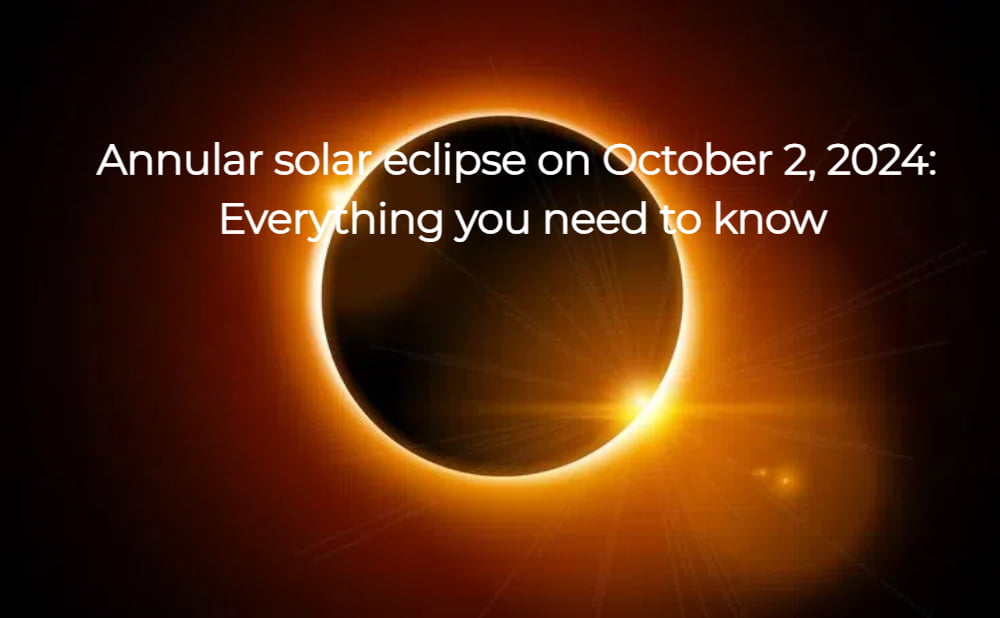Blog
Table of Contents

Annular solar eclipse on October 2, 2024: Everything you need to know
Introduction
On October 2, 2024, a "ring of fire" annular solar eclipse will pass over the Pacific Ocean, southern Chile, and parts of southern Argentina. So, are you ready to go eclipse-chasing? Here's everything you need to know about the annular solar eclipse on October 2, 2024, in Chile and Argentina.
What is an annular solar eclipse?
The October 2, 2024 eclipse will be very similar to the annular solar eclipse on October 14, 2023, which was visible in the southwestern United States, Central America, and South America. All solar eclipses occur when the new moon is exactly between the Earth and the sun and casts its shadow onto the Earth. However, unlike a total solar eclipse, annular solar eclipses occur when the moon is slightly farther from Earth. So even though the disks align from our perspective, the moon's shadow won't completely block the sun's light. Instead, a ring of sunlight will be visible around the moon.

Diamond ring eslipse on April 8, 2024
Where can you see the October 2 annular solar eclipse?
The ring of fire will only be visible from within the annular path through the Pacific Ocean, southern Chile, and southern Argentina.
The area will include the volcanic island of Rapa Nui/Easter Island, an iconic tourist destination known for mysterious stone statues known as Moai. Notably, this will be only the second time in recent decades that a total solar eclipse has been visible from this tiny Pacific island, after a total solar eclipse was seen there on July 11, 2010. The next total and annular solar eclipses will occur in 2324 and 2345, respectively.
October's Ring of Fire will also be visible from southern Patagonia in Chile and Argentina. The path will be 180 to 185 miles (290 to 300 kilometers) wide.

Map of the October 2, 2024 annular solar eclipse in South America
Guidelines for Viewing the Eclipse
For this special event, many enthusiasts witnessed the phenomenon in its entirety. With proper eye protection, such as eclipse glasses or solar viewing scopes, spectators enjoyed the spectacular sight as the moon began to cross the sun.
Warm Tip: During an annular solar eclipse, it is not safe to look directly at the sun without eclipse glasses designed for viewing the sun.
Why is the October 2, 2024 annular solar eclipse special?
First, it occurs after the Great North American Eclipse on April 8, so interest in eclipses should be high, with many eclipse chasers going to see the eclipse.
Second, this is a long eclipse, with the ring of fire lasting up to 7 minutes and 25 seconds. This is much longer than the 4 minutes and 52 seconds that will be possible during the last annular solar eclipse in the United States on October 14, 2023.
Are you ready to watch this annular solar eclipse?
Annular solar eclipses are extraordinary events for all who witness them. While we look forward to future eclipses, let us continue to cultivate our curiosity about astronomy and the universe. Whether you are an experienced astronomer or a casual observer, these astronomical events remind us of the beauty and mystery of the universe we live in. May the skies be clear until the next spectacle!


There are no customer reviews yet . Leave a Reply !